#K. Nakashima Selection
Text

阿修羅城の瞳 中島かずき
K. Nakashima Selection Vol. 2
論創社
装幀=鳥井和昌
#阿修羅城の瞳#kazuki nakashima#中島かずき#K. Nakashima Selection#kazumasa torii#鳥井和昌#anamon#古本屋あなもん#あなもん#book cover
30 notes
·
View notes
Text
Interesting Papers for Week 1, 2022
Happy New Year
Interneuron-specific gamma synchronization indexes cue uncertainty and prediction errors in lateral prefrontal and anterior cingulate cortex. Banaie Boroujeni, K., Tiesinga, P., & Womelsdorf, T. (2021). eLife, 10, e69111.
Prefrontal cortical neurons are selective for non-local hippocampal representations during replay and behavior. Berners-Lee, A., Wu, X., & Foster, D. J. (2021). Journal of Neuroscience, 41(27), 5894–5908.
The human cerebellum is essential for modulating perceptual sensitivity based on temporal expectations. Breska, A., & Ivry, R. B. (2021). eLife, 10, e66743.
Regulation of perineuronal nets in the adult cortex by the activity of the cortical network. Devienne, G., Picaud, S., Cohen, I., Piquet, J., Tricoire, L., Testa, D., … Lambolez, B. (2021). Journal of Neuroscience, 41(27), 5779–5790.
Nonlocal spatiotemporal representation in the hippocampus of freely flying bats. Dotson, N. M., & Yartsev, M. M. (2021). Science, 373(6551), 242–247.
Rapid eye movement sleep deprivation impairs neuronal plasticity and reduces hippocampal neuronal arborization in male albino rats: Noradrenaline is involved in the process. Giri, S., Ranjan, A., Kumar, A., Amar, M., & Mallick, B. N. (2021). Journal of Neuroscience Research, 99(7), 1815–1834.
A functional model of adult dentate gyrus neurogenesis. Gozel, O., & Gerstner, W. (2021). eLife, 10, e66463.
Feature-based attention enables robust, long-lasting location transfer in human perceptual learning. Hung, S.-C., & Carrasco, M. (2021). Scientific Reports, 11(1), 13914.
The interaction of global motion and global form processing on the perception of implied motion: An equivalent noise approach. Joshi, M. R., Simmers, A. J., & Jeon, S. T. (2021). Vision Research, 186, 34–40.
Drifts in Prefrontal and Parietal Neuronal Activity Influence Working Memory Judgments. Li, S., Constantinidis, C., & Qi, X.-L. (2021). Cerebral Cortex, 31(8), 3650–3664.
Early recurrence enables figure border ownership. Mehrani, P., & Tsotsos, J. K. (2021). Vision Research, 186, 23–33.
Perception of invisible masked objects in early infancy. Nakashima, Y., Kanazawa, S., & Yamaguchi, M. K. (2021). Proceedings of the National Academy of Sciences of the United States of America, 118(27), e2103040118.
Information capacity and robustness of encoding in the medial prefrontal cortex are modulated by the bioavailability of serotonin and the time elapsed from the cue during a reward-driven task. Pereyra, A. E., Mininni, C. J., & Zanutto, B. S. (2021). Scientific Reports, 11(1), 13882.
Ramp-to-threshold dynamics in a hindbrain population controls the timing of spontaneous saccades. Ramirez, A. D., & Aksay, E. R. F. (2021). Nature Communications, 12(1), 4145.
A neuronal ensemble encoding adaptive choice during sensory conflict in Drosophila. Sareen, P. F., McCurdy, L. Y., & Nitabach, M. N. (2021). Nature Communications, 12(1), 4131.
Enhanced synaptic properties of the prefrontal cortex and hippocampus after learning a spatial working memory task in adult male mice. Stavroulaki, V., Ioakeimidis, V., Konstantoudaki, X., & Sidiropoulou, K. (2021). Journal of Neuroscience Research, 99(7), 1802–1814.
Reward biases spontaneous neural reactivation during sleep. Sterpenich, V., van Schie, M. K. M., Catsiyannis, M., Ramyead, A., Perrig, S., Yang, H.-D., … Schwartz, S. (2021). Nature Communications, 12(1), 4162.
Deficits in multi-scale top-down processes distorting auditory perception in schizophrenia. Yang, F., Zhu, H., Yu, L., Lu, W., Zhang, C., & Tian, X. (2021). Behavioural Brain Research, 412, 113411.
Antagonistic surround responses in different cones are mediated by feedback synapses from different horizontal cells. Zhang, A.-J., & Wu, S. M. (2021). Vision Research, 186, 13–22.
Contrast-reversed binocular dot-pairs in random-dot stereograms for depth perception in central visual field: Probing the dynamics of feedforward-feedback processes in visual inference. Zhaoping, L. (2021). Vision Research, 186, 124–139.
10 notes
·
View notes
Text
Weekly BEnama News #174: jubeat Clan & SDVX 3 PC Special!
After a 2 week break, BEnama is back, and it delivered a bunch of juicy information on the latest update to jubeat, as well as Sound Voltex 3’s upcoming PC release!
First up, the location test announcement for jubeat Clan! It will be held this weekend at two locations in both Tokyo and Osaka!
Tokyo Leisure Land Akihabara #2 (tllakihabara2)
ROUND1 Umeda (r1_umeda)


On to new features – jubility will return as the Player Ranking system in Clan, and offer some benefits at each level:

Jubility will not decrease – it can only go up. In addition, each chart has its own value, and higher ranks can be reached by using HARD MODE:
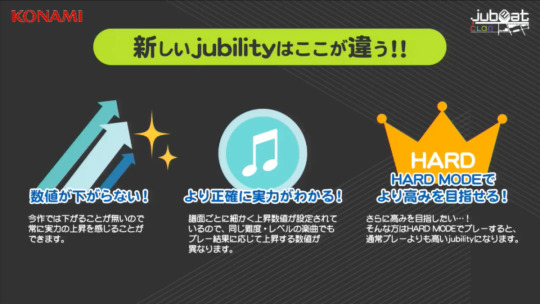
Your city will grow based on your jubility. More on that later:
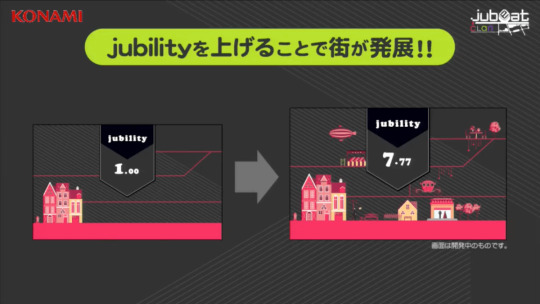
2 new songs have been revealed – “Sulk” and “Jazz is Rad”
Welcome!! is a crossover from the unreleased Otoiroha, while Yunomi’s track is from MUSECA.

Two popular Touhou Arranges from circle NekoHiroki:

The first new feature was also revealed – the city where you will “live” for a certain amount of time. Each one combines a color with a real-life city, and your residency is decided randomly:

Another much-requested feature has been added, folders for Versions and Artists! No more searching for the song you want and running out of time:
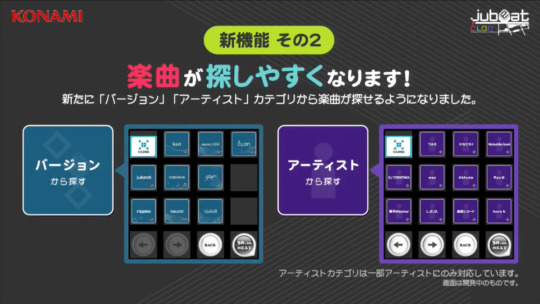
One more interesting and useful feature – Category/Folder “Clear Lamps”! Details can be seen by holding down each icon:

Finally, the system voice/announcer was revealed to be tonight’s guest, Yuki Nakashima, a popular singer and voice actress:

She treated the viewers to the first-ever playthrough of the new game:
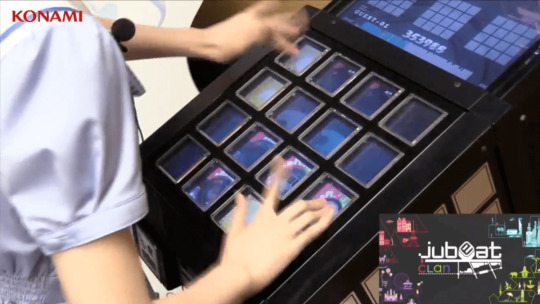
After finishing her first song, she was given :Cyanttle” as her city to live in:
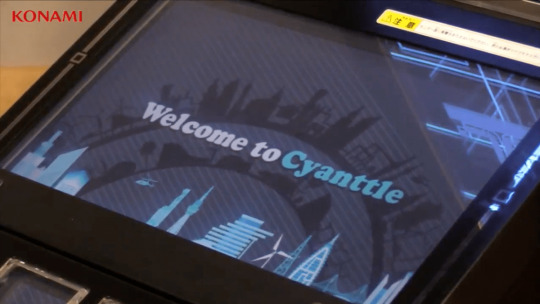
The interface is quite refined, and changes accent colors based on the location you’re currently in:

Here we can see a closeup of the “kors k” Clear Lamp:

Music selection is of course, unchanged:

In other news, jubeat plus will soon get a “Qubell pack 5” including 4 new songs. REFLEC BEAT plus will also receive 4 songs in the BEMANI MUSIC FOCUS PACK 06!

Both games will also soon have a SOUND HOLIC Touhou Arrange Pack, coming soon:

On to the SDVX news, the e-Amusement Cloud release is planned for this year, and Alpha Testing will start soon!

The game is an updated version of the previous “SOUND VOLTEX III GRAVITY WARS” with various enhancements, such as the rating and ranking systems matching SDVX 4:

MAD CHILD, tonight’s secret special guest, quickly went to his “home” to introduce the game to viewers:


(It’s actually in the BEnama studio, but MAD CHILD is a funny dude)
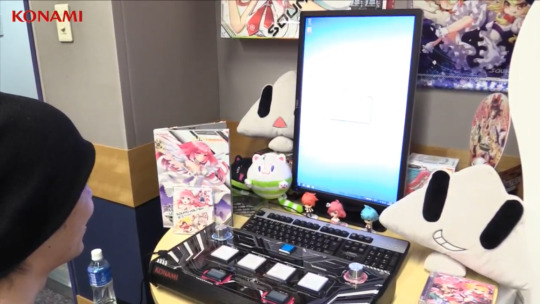
The game has options for customizing your display to either windowed or full-screen modes, and supports all rotations:
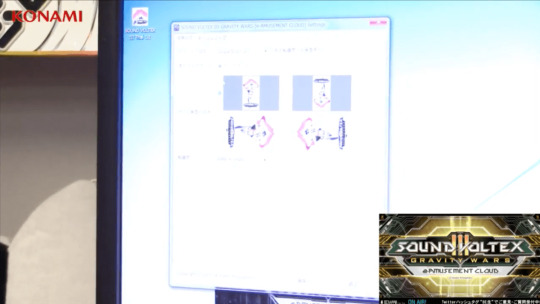
One interesting thing we noticed tonight: The game will use a “TICKET” system to play. Hopefully this replaces the subscription system that beatmania IIDX INFINITAS uses. It seems to be 3 tickets for a Light Start, 4 for Standard, and 6 (lol) for Blaster Start:

In GITADORA news, the latest Monthly Ranking for May is now in effect:

The Golden Triple Festival also brought another revival – good cool’s “5-10” (on 5/10!!)
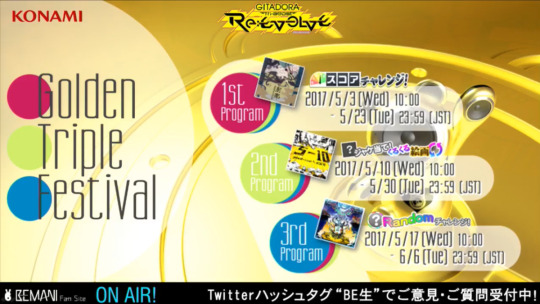
As March is finished, the Final SUKI Music Ranking for the month was announced:
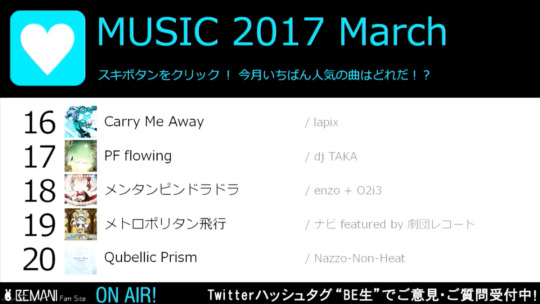



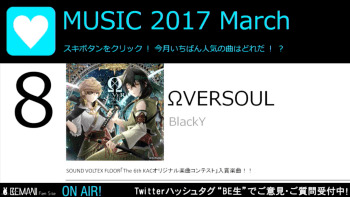



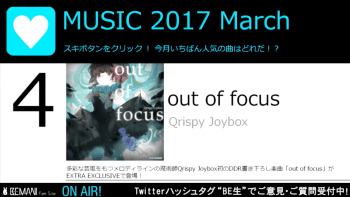

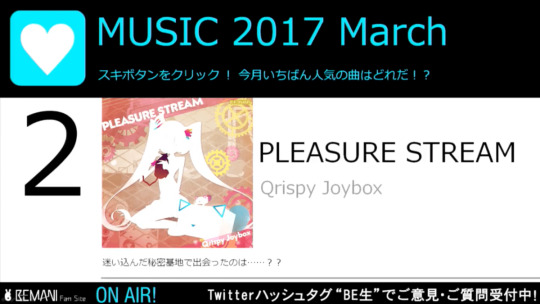
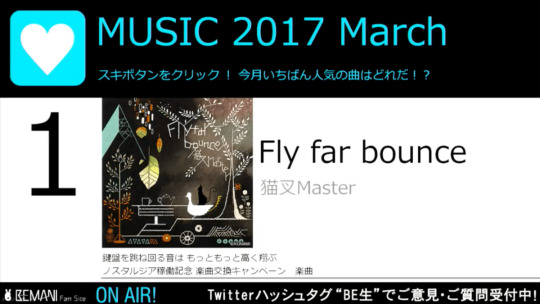
Of note, this was the first ranking with Nostalgia songs, and the top 2 songs are both Nostalgia originals! Congrats to everyone!

The next BEnama is in two weeks – on 5/24! We’ll see you back then! But make sure you’re following us on both Twitter and Facebook for all the latest.
See you~
Weekly BEnama News #174: jubeat Clan & SDVX 3 PC Special! was originally published on bemanistyle ♪
#BEnama#clan#GITADORA#jubeat#jubeat clan#location test#SDVX#SDVX Cloud#SDVX3#SOUND VOLTEX#SOUND VOLTEX 3#bemanistyle
4 notes
·
View notes
Text
Orexin/Hypocretin Agonists are Coming! Part I: Reporting Back from World Sleep 2019
Orexin/Hypocretin Agonists are Coming! Part I: Reporting Back from World Sleep 2019 Find more on: www.perspectief.org
Room 116: A Glimpse of the Future
It was a basic, boring conference room, but there was nothing basic or boring about Room 116 at the Vancouver Convention Center on Wednesday, Sept. 25, 2019 at 4:30 p.m. As the final session of the final of five days of the World Sleep Congress including World Narcolepsy Day, I felt wobbly and cataplectic, but I couldn’t go home, not yet.
At exactly 4:30 p.m., I eagerly stepped into Room 116 to join narcolepsy experts, drug developers and other patient advocates for a look into the future.
This final session, simply titled “Narcolepsy” – included researchers sharing important new results related to novel and upcoming narcolepsy therapies. In July 2018, I reported here on the unprecedented amount of drug development underway for narcolepsy. Since then, the FDA has made three important approvals and more drug development continues on, full-steam ahead!
So it’s time for an update. Part I will catch you up to speed on orexin/hypocretin agonists, and Part II will share many more exciting developments.
Dr. Todd Swick shares his excitement for new drugs to treat narcolepsy:
Watch this video on YouTube.
Advancing Orexin-Related Therapies
Since 1999, we’ve known that type 1 narcolepsy with cataplexy is caused by a selective loss of neurons producing the neuropeptide orexin (or hypocretin), which plays a central role in maintaining wakefulness. However, finding compounds able to cross the blood-brain barrier and mimic the function of orexin has been scientifically challenging. Over the past 20 years, a few approaches have been explored, but promising research started coming out of Japan a few years ago with Takeda Pharmaceuticals.
So when Dr. Rebecca Evans took the stage in Room 116 to present Takeda’s first-in-human clinical trial findings for the orexin 2 receptor selective agonist, TAK-925, the excitement was palpable. I felt honored to be in the room as these outcomes were shared publicly for the first time here.
TAK-925
Background: In 2017, a patent for orexin 2 receptor selective agonists, including the clinical candidate TAK-925 was claimed. In April 2018, the orexin 2 receptor-selective agonist, TAK-925, was found to significantly increase wakefulness and recover cataplexy-like episodes in mice with a type of narcolepsy.
A second publication reported on the pharmacological and electrophysiological characterization of TAK-925 from in vitro (petri dish-type studies) and in vivo (studies in wild-type mice, common marmosets, and cynomolgus monkeys). TAK-925 was shown to induce wake-promoting effects in the mice and nonhuman primates.
Research Findings:
T Fujimoto, K Rikimaru, K Fukuda, H Sugimoto, T. Matsumoto, N Tokunaga, M. Hirozane SUBSTITUTED PIPERIDINE COMPOUND AND USE THEREOF WO2017135306 https://patentscope.wipo.int/search/en/detail.jsf?docId=WO2017135306
M Suzuki, H Yukitake, T Ishikawa, H Kimura; 0001 An Orexin 2 Receptor-selective Agonist TAK-925 Ameliorates Narcolepsy-like Symptoms In Orexin/ataxin-3 Mice, Sleep, Volume 41, Issue suppl_1, 27 April 2018, Pages A1, https://doi.org/10.1093/sleep/zsy061.000
H Yukitake, T Ishikawa, A Suzuki, Y Shimizu, M Nakashima, T Fujimoto, K Rikimaru, M Ito, M Suzuki, H Kimura; 0002 An Orexin 2 Receptor-selective Agonist, TAK-925, Shows Robust Wake-promoting Effects In Mice And Non-human Primates, Sleep, Volume 41, Issue suppl_1, 27 April 2018, Pages A1, https://doi.org/10.1093/sleep/zsy061.001
New findings shared at World Sleep 2019: Dr. Rebecca Evans of Takeda Pharmaceuticals shared the highly-anticipated results of the first-in-human phase 1 clinical trial of TAK-925 in people with narcolepsy, healthy adults, and elderly people.
The study measured TAK-925’s impact on people with type 1 narcolepsy’s wakefulness by a few measures, but the one that stuck out to me was the “Maintenance of Wakefulness Test” (MWT) data. The MWT is a fancy name for “stare at a blank wall for 40 minutes and see how long before you to fall asleep.” In this study, when the people with type 1 narcolepsy received a “placebo” infusion (a.k.a. no real drug), they stayed awake for an average of 2.9 mins out of the total 40 mins. When participants had various doses of TAK-925, they stayed awake much longer, averaging:
22.4 mins with TAK-925 at 5mg
37.6 mins with TAK-925 at 11.2mg
40 mins with TAK-925 at 44.8mg
New findings shared at World Sleep 2019:A Phase 1B trial of TAK-925 in sleep-deprived healthy adults in the US showed wake-promoting effects even though these individuals presumably have normal orexin levels. Importantly, these findings have encouraged Takeda to consider testing orexin agonists for people who are sleepy but don’t have an orexin/hypocretin deficiency, a.k.a. people with type 2 narcolepsy without cataplexy, idiopathic hypersomnia, or residual excessive daytime sleepiness due to obstructive sleep apnea.
Current Status:
Not yet enrolling, but now listed on clinicaltrials.gov: a Phase 1b clinical trial in the U.S. and Japan will evaluate TAK-925 in people with idiopathic hypersomnia (IH). To learn more, see https://clinicaltrials.gov/ct2/show/NCT04091438 and http://www.ox2rsparkleprogram.com.
Not yet enrolling, but now listed on clinicaltrials.gov: a Phase 1b clinical trial in the U.S. will evaluate TAK-925 in adults with obstructive sleep apnea (OSA) and who are experiencing excessive daytime sleepiness (EDS). To learn more, see https://clinicaltrials.gov/ct2/show/NCT04091425 and http://www.ox2rsparkleprogram.com.
TAK-994 – An Oral Formulation!
Background: While TAK-925 uses IV infusions, Takeda is preparing to investigate an oral dose formulation OX2R agonist, TAK-994.
Research findings:
Two posters at the World Sleep Congress described that TAK-994 was studied in two mouse models of narcolepsy and increased wakefulness and suppressed cataplexy-like episodes.
Current Status: Not yet enrolling, but now listed on clinicaltrials.gov: a Phase 1 clinical trial in North America and Japan to evaluate oral doses of TAK-994 in people with Type 1 Narcolepsy with Cataplexy. To learn more, see https://clinicaltrials.gov/ct2/show/NCT04096560 and http://www.ox2rsparkleprogram.com.
I also found it very powerful and meaningful that Dr. Evans took the time at the end of her presentation to say, “Thank you to the study participants, especially those with type 1 narcolepsy with cataplexy who washed out of their medications to participate in this study.”
In my work with the White House and Stanford MedX on Precision Medicine and Participant Engagement, I’d felt that genuine recognition of the people who participate in research goes a long way toward making research a more respectful process.
(Please note: I am not a scientist or doctor. You should always speak with your narcolepsy specialist about treatment options and whether a clinical trial would be a good option for you. However, I hope this post helps provide access to information, because when navigating a complex healthcare system with a serious condition like narcolepsy, information is power.)
Stay tuned! I will follow up with Part II soon sharing more advancements in narcolepsy treatments.
from Julie Flygare http://julieflygare.com/orexin-hypocretin-agonists-are-coming-part-i-reporting-back-from-world-sleep-2019/
from https://www.perspectief.org/orexin-hypocretin-agonists-are-coming-part-i-reporting-back-from-world-sleep-2019/
0 notes
Text
MicroRNA-6826 and -6875 in plasma are valuable non‑invasive biomarkers that predict the efficacy of vaccine treatment against metastatic colorectal cancer.
Related Articles MicroRNA-6826 and -6875 in plasma are valuable non‑invasive biomarkers that predict the efficacy of vaccine treatment against metastatic colorectal cancer. Oncol Rep. 2017 Jan;37(1):23-30 Authors: Kijima T, Hazama S, Tsunedomi R, Tanaka H, Takenouchi H, Kanekiyo S, Inoue Y, Nakashima M, Iida M, Sakamoto K, Suzuki N, Takeda S, Ueno T, Yamamoto S, Yoshino S, Okuno K, Nagano H Abstract Various vaccine treatments against metastatic colorectal cancer have been developed and applied. However, to improve the efficacy of immunotherapy, biomarkers that can predict the effects are needed. It has been reported that various microRNAs (miRNAs) in peripheral blood may be useful as non-invasive biomarkers. In this study, miRNAs influencing the efficacy of vaccine treatment were screened for in a microarray analysis of 13 plasma samples that were obtained from patients prior to vaccine treatment. To validate the screening results, real-time RT-PCR was performed using 93 plasma samples obtained from patients prior to vaccine treatment. Four candidate miRNAs were selected according to the results of the comprehensive analysis of miRNA expression, which were ranked using the Fisher criterion and the absolute value of the log2 ratio in the screening analysis. The validation analysis showed that in the HLA-A*2402‑matched patient group (vaccine-treated group), patients with a high expression of plasma miR-6826 had a poorer prognosis than those with a low expression (P=0.048). In contrast, in the HLA-A*2402-unmatched patient group (control group), there was no difference between the patients with high or low plasma miR-6826 expression (P=0.168). Similar results were obtained in the analysis of miR-6875 (P=0.029 and P=0.754, respectively). Moreover, multivariate analysis of the Cox regression model indicated that the expression of miR-6826 was the most significant predictor for overall survival (P=0.003, hazard ratio, 3.670). In conclusion, plasma miR-6826 and miR-6875 may be predictive biomarkers for a poor response to vaccine treatment. Although further clarification is needed regarding the functions of miR-6826 and miR-6875 and their relationship to immune‑related molecules, plasma miR-6826 and miR-6875 may be useful negative biomarkers for predicting the efficacy of vaccine treatment. PMID: 27878288 [PubMed - indexed for MEDLINE] http://dlvr.it/NsFrFW
0 notes
Text
Protein Sequence Comparison Based on Physicochemical Properties and the Position-Feature Energy Matrix
Zhao, Y., Li, X. & Qi, Z. Novel 2D graphic representation of protein sequence and its application. J. Fiber Bioengineering and Informatics 7, 23–33 (2014).
Huang, D. & Yu, H. Normalized Feature Vectors: A novel alignment-free sequence comparison method based on the numbers of adjacent amino acids. IEEE/ACM Trans. Comput. Biol. 10, 457–467 (2013).
Gotoh, O. An improved algorithm for matching biological sequences. J. Mol. Biol. 162, 705–708 (1982).
Chakraborty, A. & Bandyopadhyay, S. FOGSAA: Fast optimal global sequence alignment algorithm. Sci. Rep. 3, 1746 (2013).
Feng, D. & Doolittle, R. F. Progresssive sequence alignment as a prerequisite to correct phylogenetic trees. J. Mol. Evol. 25, 351–360 (1987).
Bradley, R. K. et al. Fast Statistical Alignment. PLoS Comput. Biol. 5, e1000392 (2009).
Reinert, G., Chew, D., Sun, F. & Waterman, M. S. Alignment-free sequence comparison(I): Statistics and power. J. Comput. Biol. 16, 1615–1634 (2009).
Schwende, I. & Pham, T. D. Pattern recognition and probabilistic measures in alignment-free sequence analysis. Brief Bioinform 15, 354–368 (2014).
Borozan, I., Watt, S. & Ferretti, V. Integrating alignment-based and alignment-free sequence similarity measures for biological sequence classification. Bioinf. 31, 1396–1404 (2015).
Didier, G., Corel, E., Laprevotte, I., Grossmann, A. & Landès-Devauchelle, C. Variable length local decoding and alignment-free sequence comparison. Theor. Comput. Sci. 462, 1–11 (2012).
Nakashima, H., Nishikawa, K. & Ooi, T. The folding type of a protein is relevant to the amino acid composition. J. Biochem. 99, 152–162 (1986).
Chou, K. C. Some remarks on protein attribute prediction and pseudo amino acid composition (50th Anniversary Year Review). J. Theor. Biol. 273, 236–247 (2011).
Mohabatkar, H., Beigi, M. M., Abdolahi, K. & Mohsenzadeh, S. Prediction of allergenic proteins by means of the concept of Chou’s pseudo amino Aacid composition and a machine learning approach. Medicinal Chemistry 9, 133–137 (2013).
Zhong, W. & Zhou, S. Molecular science for drug development and biomedicine. Int. J. Molec. Sci. 15, 20072–20078 (2014).
He, P., Wei, J., Yao, Y. & Tie, Z. A novel graphical representation of proteins and its application. Physica A 391, 93–99 (2012).
Randić M. et al. Graphical representation of proteins. Chem. Rev. 111, 790–862 (2011).
Jiang, S., Liu, W. & Fee, C. H. Graph theory of enzyme kinetics: I. Steady state reaction system, Scientia Sinica 22, 341–358 (1979).
Yao, Y. et al. Analysis of similarity/dissimilarity of protein sequences. Proteins 73, 864–871 (2008).
Kuang, C., Liu, X., Wang, J., Yao, Y. & Dai, Q. Position-specific statistical model of DNA sequences and its application for similarity analysis. MATCH Commun. Math. Comput. Chem. 73, 545–558 (2015).
Sun, D., Xu, C. & Zhang, Y. A novel method of 2D graphical representation for proteins and its application. MATCH Commun. Math. Comput. Chem. 75, 431–446 (2016).
Xia, X. & Li, W. What amino acid properties affect protein evolution? J. Mol. Evol. 47, 557–564 (1998).
Qi, Z., Jin, M., Li, S. & Feng, J. A protein mapping method based on physicochemical properties and dimension reduction. Comput. Biol. Med. 57, 1–7 (2015).
Gutman, I. The energy of a graph. Ber. Math. Statist. Sekt. Forschungsz. Graz 103, 1–22 (1978).
Wu, H., Zhang, Y., Chen, W. & Mu, Z. Comparative analysis of protein primary sequences with graph energy. Physica A 43, 249–262 (2015).
Gutman, I., Li, X. & Zhang, J. Graph energy, in: Analysis of Complex Networks. From Biology to Linguistics, (ed. Dehmer, M. & Emmert-Streib, F.) 145–174 (Wiley-VCH, Weinheim, 2009).
Li, X., Shi, Y. & Gutman, I. Graph Energy (ed. Li, X., Shi, Y. & Gutman) (Springer. New York, 2012).
Zamyatin, A. A. Protein volume in solution. Prog. Biophys. Mol. Biol. 24, 107–123 (1972).
Chotia, C. The nature of the accessible and buried surfaces in proteins. J. Mol. Biol. 105, 1–14 (1975).
Randić, M. 2-D graphical representation of proteins based on physicochemical properties of amino acids. Chem. Phys. Lett. 444, 176–180 (2007).
Paola, L. D., Mei, G., Venere, A. D. & Giuliani, A. Exploring the stability of dimers through protein structure topology. Curr. Protein Peptide Sci. 17, 30–36 (2016).
Yu, L., Zhang, Y., Jian, G. & Gutman, I. Classification for microarray data based on K-means clustering combined with modified single-to-noise-ratio based on graph energy, J. Comput. Theor. Nanosci. 14, 598–606 (2017).
Emmert-Streib, F., Dehmer, M. & Shi, Y. Fifty years of graph matching, network alignment and comparison. Inform. Sci. 346–347, 180–197 (2016).
Dehmer, M., Emmert-Streib, F., Chen, Z., Li, X. & Shi, Y. Mathematical Foundations and Applications of Graph Entropy, (ed. Dehmer, M. et al.) (Wiley, 2016).
Yu, C., Deng, M. & Yau, S. S. DNA sequence comparison by a novel probabilistic method. Inf. Sci. 181, 1484–1492 (2011).
Cover, T. M. & Thomas, J. A. Elements of Informatiobn Theory, (ed. Wiley, J. & Sons) 2nd edition (Wiley, 1991).
Kullback, S. & Leibler, R. A. On information and sufficiency. Ann. Math. Stat. 22, 79–86 (2015).
Yu, C., Cheng, S., He, R. & Yau, S. S. Protein map: A alignment-free sequence comparison method based on various properties of amino acids. Gene 486, 110–118 (2011).
Emmert-Streib, F. & Dehmer, M. Information processing in the transcriptional regulatory network of yeast: Functional robustness. BMC Systems Biology 3 (2009).
Lam, W. & Bacchus, F. Learning Bayesian belief networks: An approach based on the MDL principle. Computat. Intell. 10, 269–293 (1994).
Xiao, X. et al. Using complexity measure factor to predict protein subcellular location. Amino Acids 28, 57–61 (2005).
Liao, B., Liao, B., Sun, X. & Zeng, Q. A novel method similarity analysis and protein sub-cellular localization prediction. Bioinf. 26, 2678–2683 (2010).
Mu, Z., Wu, J. & Zhang, Y. A novel method for similarity/dissimilarity analysis of protein sequences. Physica A 392, 6361–6366 (2013).
Chang, G. & Wang, T. Phylogenetic analysis of protein sequences based on distribution of length about common substring. Protein J. 30, 167–172 (2011).
Ford, M. J. Molecular evolution of transferrin: Evidence for positive selection in salmonids. Mol. Biol. Evol. 18, 639–647 (2001).
Davies, P. L., Baardsnes, J., Kuiper, M. J. & Walker, V. K. Structure and function of antifreeze proteins. Phil. Trans. R. Soc. Lond. B 357, 927–935 (2002).
Duman, J., Verleye, D. & Li, N. Site-specific forms of antifreeze protein in the beetle dendroides canadensis. J. Comp. Physiol. B 172, 547–552 (2002).
Graether, S. P. et al. Beta-helix structure and ice-binding properties of a hyperactive antifreeze protein from an insect. Nature 406, 325–328 (2000).
Graether, S. P. & Sykes, B. D. Cold survival in freeze intolerant insects: the structure and function of beta-helical antifreeze proteins. J. Biochem. 271, 3285–3296 (2004).
Altschul, S. F. et al. Gapped LAST and PSI-BLAST: a new generation of protein database search programs. Nucleic Acids Res. 25, 3389–3402 (1997).
Yau, S., Yu, C. & He, R. A protein map and its application. DNA Cell. Biol. 27, 241–250 (2008).
Xu, C., Sun, D., Liu, S. & Zhang, Y. Protein sequence analysis by incorporating modified chaos game and physicochemical properties into Chou’s general pseudo amino acid composition. J. Theor. Biol. 406, 105–115 (2016).
— Nature Scientific Reports
#Nature Scientific Reports#Protein Sequence Comparison Based on Physicochemical Properties and the P
0 notes
Text
[앨범] 2007년 ORICON YEARLY ALBUM 초동 CHART
New Post has been published on http://kpopcommunityblog.com/%ec%95%a8%eb%b2%94-2007%eb%85%84-oricon-yearly-album-%ec%b4%88%eb%8f%99-chart/
[앨범] 2007년 ORICON YEARLY ALBUM 초동 CHART
*1 693,038 Mr.Children 『HOME』
*2 502,426 倖田來未 『Black Cherry』
*3 475,284 浜崎あゆみ 『A BEST 2-WHITE-』
*4 470,057 浜崎あゆみ 『A BEST 2-BLACK-』
*5 432,841 ケツメイシ 『ケツノポリス5』
*6 350,045 大塚愛 『愛 am BEST』
*7 301,072 KinKi Kids 『39』
*8 300,323 EXILE 『EXILE EVOLUTION』
*9 292,687 B’z 『ACTION』
10 290,640 YUI 『CAN’T BUY MY LOVE』
11 281,024 Mr.Children 『B-SIDE』
12 270,976 KAT-TUN 『cartoon KAT-TUN Ⅱ You』
13 250,619 安室奈美恵 『PLAY』
14 245,791 スキマスイッチ 『グレイテスト・ヒッツ』
15 224,428 伊藤由奈 『HEART』
16 223,658 アヴリル・ラヴィーン 『ベスト・ダム・シング』
17 220,946 KinKi Kids 『I album -iD-』
18 220,765 竹内まりや 『Denim』
19 220,649 L’Arc~en~Ciel 『KISS』
20 214,149 ORANGE RANGE 『RANGE』
21 211,805 関ジャニ∞ 『KJ2 ズッコケ大脱走』
22 210,804 ORANGE RANGE 『ORANGE』
23 208,031 大塚愛 『LOVE PiECE』
24 198,727 木村カエラ 『Scratch』
25 195,788 NEWS 『pacific』
26 190,870 嵐 『Time』
27 190,342 KinKi Kids 『Φ』
28 182,009 BoA 『MADE IN TWENTY(20)』
29 180,696 YUKI 『five-star』
30 175,970 小田和正 『自己ベスト-2』
31 161,458 倖田來未 『BEST~BOUNCE & LOVERS~(期間限定生産盤)』
32 153,261 中島美嘉 『YES』
33 150,735 リンキン・パーク 『ミニッツ・トゥ・ミッドナイト』
34 150,135 GLAY 『LOVE IS BEAUTIFUL』
35 146,214 mihimaru GT 『THE BEST of mihimaru GT』
36 140,302 ポルノグラフィティ 『ポルノグラフィティ』
37 130,361 GReeeeN 『あっ、ども。はじめまして。』
38 122,723 SOUL’d OUT 『Single Collection』(2週合算)
39 116,229 スピッツ 『さざなみCD』
40 115,752 徳永英明 『VOCALIST 3』
41 108,751 スガシカオ 『ALL SINGLES BEST』
42 106,409 Dragon Ash 『The Best of Dragon Ash with Changes Vol.2』
43 102,043 バックストリート・ボーイズ 『アンブレイカブル』
44 101,475 東京事変 『娯楽(バラエティ)』
45 *97,652 椎名林檎×斎藤ネコ 『平成風俗』
46 *96,194 Dragon Ash 『The Best of Dragon Ash with Changes Vol.1』
47 *95,511 ゆず 『ゆずのね 1997-2007』
48 *91,168 BOΦWY 『THIS BOΦWY DRAMATIC』
49 *90,285 BOΦWY 『THIS BOΦWY DRASTIC』
50 *88,723 ZARD 『Soffio di vento ~Best of IZUMI SAKAI Selection~』
51 *88,658 アンジェラ・アキ 『TODAY』
52 *86,731 ZARD 『Brezza di mare ~dedicated to IZUMI SAKAI~』
53 *85,298 タッキー&翼 『タキツバベスト』
54 *82,308 MONKEY MAJIK 『空はまるで』
55 *80,616 NANA starring MIKA NAKASHIMA 『THE END』
56 *78,641 UVERworld 『BUGRIGHT』
57 *77,506 ENDLICHERI☆ENDLICHERI 『Neo Africa Rainbow Ax』
58 *77,061 KREVA 『よろしくお願いします』
59 *76,680 m-flo 『COSMICOLOR』
60 *76,122 V6 『Voyager』
61 *76,083 Ne-Yo(ニーヨ) 『ビコーズ・オブ・ユー』
62 *74,329 Various Artists 『BLEACH THE BEST』
63 *73,212 ボン・ジョヴィ 『ロスト・ハイウェイ~リミテッド・エディション』
64 *73,054 MISIA 『ASCENSION』
65 *72,879 新垣結衣 『そら』
66 *72,725 ジャンヌダルク 『SINGLES 2』
67 *70,702 マキシマム ザ ホルモン 『ぶっ生き返す』
68 *70,641 チャットモンチー 『生命力』
69 *69,757 東京スカパラダイスオーケストラ 『BEST OF TOKYO SKA 1998-2007』
70 *69,484 RIP SLYME 『FUNFAIR』
71 *69,354 Dragon Ash 『INDEPENDIENTE』
72 *66,685 氷室京介 『IN THE MOOD』
73 *65,011 Every Little Thing 『14 message~every ballad songs 2~』
74 *64,154 マルーン5 『イット・ウォント・ビー・スーン・ビフォー・ロング』
75 *62,608 SUM 41 『アンダークラス・ヒーロー』
76 *61,670 長渕剛 『Come on Stand up!』
77 *59.669 BEAT CRUSADERS 『EPopMAKING ~Popとの遭遇~』
78 *56,837 Aqua Timez 『ダレカの地上絵』
79 *56,109 SEAMO 『Round About』
80 *56,101 柴咲コウ 『嬉々』
81 *53,880 くるり 『ワルツを踊れ Tanz Walzer』
82 *53,605 BONNIE PINK 『Thinking Out Loud』
83 *53,254 いきものがかり 『桜咲く街物語』
84 *53,084 FLOW 『FLOW THE BEST ~Single Collection~』
85 *51,211 Crystal Kay 『ALL YOURS』
86 *50,014 abingdon boys school 『abingdon boys school』
87 *48,027 LOVE PSYCHEDELICO 『GOLDEN GRAPEFRUIT』
88 *47,427 Cocco 『きらきら』
89 *47,393 槇原敬之 『悲しみなんて何の役にも立たないと思っていた。』
90 *46,608 吉井和哉 『Hummingbird in Forest ofSpace』
91 *46,381 BENNIE K 『THE WORLD』
92 *45,229 AI 『DON’T STOP A.I.』
93 *43,975 Salyu 『TERMINAL』
94 *43,126 水樹奈々 『GREAT ACTIVITY』
95 *41,830 氷川きよし 『演歌名曲コレクション7 ~あばよ・きよしのソーラン節~』
96 *41,686 奥田民生 『記念ライダー1号 ~奥田民生シングルコレクション~』
97 *41,371 加藤ミリヤ 『Diamond Princess』
98 *40,686 水樹奈々 『THE MUSEUM』
99 *40,473 アークティック・モンキーズ 『フェイヴァリット・ワースト・ナイトメアー』
100 *40,206 Ken Yokoyama 『Third Time’sA Charm』
0 notes
Text
2018 Exciting Update: Advancing Novel Treatment Options for Narcolepsy
The blog post 2018 Exciting Update: Advancing Novel Treatment Options for Narcolepsy was originally published on www.perspectief.org
One of my biggest takeaway from the APSS 2018 SLEEP Meeting last month was the great amount of drug development underway for narcolepsy! Below is a list of some of the emerging treatments “abuzz” at #SLEEP2018. These are at various stages in development, and it’s hard to predict how quickly each will advance to (hopefully) gain regulatory approval and become available in the U.S. and other locations worldwide. Some are in clinical trials with opportunities to get involved. If you’ve participated in a clinical trial — THANK YOU! You’re making a huge difference to improve the lives of people with narcolepsy for years to come.
Please remember, I failed high school biology, sorry mom! But seriously, I am not a scientist or doctor. You should always speak with your narcolepsy specialist about treatment options and whether a clinical trial would be a good option for you. However, I hope this post helps provide access to information. When navigating a serious condition like narcolepsy, information is power.
Pitolisant
Background: Pitolisant is a histamine H3 receptor inverse agonist that activates histamine neurons, under development in the US to treat excessive daytime sleepiness and cataplexy in people with narcolepsy. This an exciting advance because pitolisant works via a different mechanism of action than other treatment options currently available. This great article talks about the mechanisms of action and offers some ideas on how the treatment may work.
Pitolisant has been on the market in Europe for two years now, since it’s approval by the European Medicines Agency in 2016. In Europe, pitolisant is known by its trade name “Wakix”. In October 2017, Harmony Biosciences, LLC acquired the rights to develop, register and market the drug in the United States.
Research Findings:
Phase 3 study results focused on excessive daytime sleepiness: https://www.ncbi.nlm.nih.gov/pubmed/24107292
Subsequent Phase 3 study results focused on cataplexy: https://www.ncbi.nlm.nih.gov/pubmed/28129985
Current status: On May 21, 2018, Harmony Biosciences, LLC announced here that the U.S. Food and Drug Administration (FDA) granted Breakthrough Therapy and Fast Track designations to pitolisant for the treatment of excessive daytime sleepiness and cataplexy in people with narcolepsy.
Get Involved: While the clinical trials necessary for the FDA to consider the approval of the drug are complete, there is a system set up for some eligible individuals to gain access the treatment at this point through an open-label Expanded Access Program. Learn more here.
Solriamfetol
Background: Solriamfetol (also known as JZP-110) is a wake-promoting agent, a dopamine and nonrepinephrine reuptake inhibitor to treat excessive daytime sleepiness in people with narcolepsy and obstructive sleep apnea. Clinical and preclinical data suggest that the wake-promoting effects of solriamfetol differ from medications such as modafinil and amphetamine.
Current Status: In March 2018, the FDA accepted for filing Jazz Pharmaceutical’s New Drug Application (NDA) seeking marketing approval for solriamfetol (also known as JZP-110) for the treatment of excessive sleepiness in adults with narcolepsy or obstructive sleep apnea.
Research Findings: There were a ton of posters and presentations at the 2018 SLEEP meeting on solriamfetol. Jazz’s full announcement is here. Four phase 3 clinical trials support solriamfetol’s NDA, including:
One study evaluating excessive sleepiness in adult patients with narcolepsy (TONES 2)
Two studies evaluating excessive sleepiness in adult patients with OSA (TONES 3 and TONES 4),
An open-label long term safety and maintenance of efficacy for the treatment of excessive sleepiness in patients with narcolepsy or OSA (TONES 5).
Once-nightly formulation of sodium oxybate
Background: This is a once-nightly formulation of sodium oxybate using Avadel Pharmaceuticals’ proprietary Micropump® technology to provide an extended-release of the drug. It is currently undergoing testing in a Phase 3 clinical trial for the treatment of excessive daytime sleepiness (EDS) and cataplexy in people living with narcolepsy.
Current status: On January 10, 2018, Avadel Pharmaceuticals announced that their once-nightly formulation of sodium oxybate has been granted Orphan Drug Designation from the FDA.
Research Findings:
First-in-Human Study
Second Clinical Trial Results
Get Involved: Currently recruiting participants in U.S. and other locations internationally to participate in the Phase 3 REST-ON trial. For more information, visit www.rethinknarcolepsy.com and ClinicalTrials.gov Identifier: NCT02720744
Pediatric indication for sodium oxybate
Background: While some children currently take sodium oxybate to treat cataplexy and excessive daytime sleepiness of narcolepsy, it is currently considered “off-label” use because the treatment had not been formally evaluated and FDA-approved specifically for a pediatric population. (Off-label use is NOT improper use, and many people rely on “off-label” use to access critical treatments, especially in children and rare disease populations. However, this supplemental application, if approved, should help to improve access to sodium oxybate for children with narcolepsy.)
Current status: On June 27, 2018, Jazz Pharmaceuticals announced here that the FDA accepted for priority review its supplemental new drug application (sNDA) seeking revised labeling for Xyrem (sodium oxybate) oral solution, to include an indication to treat cataplexy and excessive daytime sleepiness (EDS) in children with narcolepsy. The goal date for an FDA decision is October 27, 2018!
Research Findings: E Mignot, G Plazzi, Y Dauvilliers, C Rosen, C Ruoff, J Black, R Parvataneni, D Guinta, Y Wang, M Lecendreux; 0813 Sodium Oxybate Treatment of Narcolepsy in Pediatric Patients: Long-term Efficacy and Safety, Sleep, Volume 41, Issue suppl_1, 27 April 2018, Pages A302, https://doi.org/10.1093/sleep/zsy061.812
Low sodium version of sodium oxybate
Background: JZP-258 is a low-sodium version of sodium oxybate that has 90 percent less sodium.
Get Involved:
Phase 3 clinical trial currently underway for people with narcolepsy with cataplexy: ClinicalTrials.gov Identifier: NCT03030599
Phase 3 clinical trial preparing to open for people with idiopathic hypersomnia: ClinicalTrials.gov Identifier: NCT03533114
Advancing Orexin-Related Therapies!
Since 1999, we’ve known that type 1 narcolepsy with cataplexy is caused by a selective loss of neurons producing the neuropeptide orexin (otherwise known as hypocretin), which plays a central role in maintaining wakefulness. However, finding compounds that can get past the blood-brain barrier and mimic the function of orexin has been scientifically challenging. Over the past 20 years, a few approaches have been explored, but the most recent progress comes from Japan!
YNT-185
Background: In 2017, the nonpeptide orexin type-2 receptor agonist, YNT-185 was found to improve narcolepsy-cataplexy symptoms in mouse models. This study provided a proof-of-concept for mechanistic treatments of narcolepsy with orexin receptor agonists. The compound also promoted wakefulness in “wildtype” mice (meaning typical mice that didn’t have narcolepsy), suggesting that orexin receptor agonists could be useful for treating sleepiness due to other causes.
Research Findings: Irukayama-Tomobe Y et al. (2017) A non-peptide orexin type-2 receptor agonist ameliorates narcolepsy-cataplexy symptoms in mouse models. Proc Natl Acad Sci USA doi/10.1073/pnas.1700499114
Current Status: The research team is currently refining the compound.
TAK-925
Background: In 2017, also in Japan, a patent was claimed for orexin 2 receptor selective agonist, structurally different from YNT-185. The patent includes strong agonists including the clinical candidate TAK-925.
In April 2018, the orexin 2 receptor-selective agonist, TAK-925, was found to significantly increased wakefulness time and also completely recovered wakefulness fragmentation and cataplexy-like episodes in orexin/ataxin-3 transgenic mice. This study indicated that the treatment may have the potential to treat a broad range of narcolepsy symptoms such as excessive daytime sleepiness and cataplexy.
A second publication reported on the pharmacological and electrophysiological characterization of TAK-925 from in vitro (petri dish-type studies) and in vivo (studies in wild-type mice and non-human primates including common marmosets, and cynomolgus monkeys).TAK-925 was shown to induce wake-promoting effects in the mice and nonhuman primates.
Research Findings:
T Fujimoto, K Rikimaru, K Fukuda, H Sugimoto, T. Matsumoto, N Tokunaga, M. Hirozane SUBSTITUTED PIPERIDINE COMPOUND AND USE THEREOF WO2017135306 https://patentscope.wipo.int/search/en/detail.jsf?docId=WO2017135306
M Suzuki, H Yukitake, T Ishikawa, H Kimura; 0001 An Orexin 2 Receptor-selective Agonist TAK-925 Ameliorates Narcolepsy-like Symptoms In Orexin/ataxin-3 Mice, Sleep, Volume 41, Issue suppl_1, 27 April 2018, Pages A1, https://doi.org/10.1093/sleep/zsy061.000
H Yukitake, T Ishikawa, A Suzuki, Y Shimizu, M Nakashima, T Fujimoto, K Rikimaru, M Ito, M Suzuki, H Kimura; 0002 An Orexin 2 Receptor-selective Agonist, TAK-925, Shows Robust Wake-promoting Effects In Mice And Non-human Primates, Sleep, Volume 41, Issue suppl_1, 27 April 2018, Pages A1, https://doi.org/10.1093/sleep/zsy061.001
Current Status: It’s exciting to see that TAK-925 has advanced to human studies!
In Japan, the first-in-human phase 1 clinical trial of TAK-925 is currently underway testing the compound in people with narcolepsy healthy adults and elderly people to learn about the safety, tolerability, and pharmacokinetics of a single intravenous administration. Learn more: ClinicalTrials.gov Identifier: NCT03332784
In the U.S., TAK-925 is in a Phase 1B study comparing it to modafinil in sleep-deprived healthy adults. Learn more: ClinicalTrials.gov Identifier: NCT03522506
Please know this is NOT a full list of all emerging treatments under development for narcolepsy. I lost steam before even getting to GABA-A receptor antagonists under investigation for people with idiopathic hypersomnia. For a more thorough review of emerging narcolepsy treatments from March 2017: New developments in the management of narcolepsy.
A HUGE thank you to all those who are working to make this progress possible: scientists, drug developers, clinical research teams, and individuals with narcolepsy and families around the world. Your contributions are making a very meaningful difference.
Support Narcolepsy Research
While the current pharmaceutical industry investment in narcolepsy drug development is encouraging, the current federal investment in basic and translational narcolepsy research is not encouraging. In Fiscal Year 2017, the National Institutes of Health (NIH) funded an estimated $2.6 million total for all of narcolepsy type 1, narcolepsy type 2 and idiopathic hypersomnia research. This is a significant reduction in the past decade (full analysis here).
Many unanswered research questions remain and federal funding is a critical resource to enable top researchers to make progress to better understand the biological mechanisms underlying all types of narcolepsy and lead us to the next generation of treatment options. If advancing research is important to you, please sign up for Project Sleep’s upcoming advocacy webinar.
Project Sleep is strategically elevating the voices of people living with sleep-related conditions and their loved ones to help decision-makers understand the urgency of our unmet needs. See our advocacy guiding principles here. Some of our efforts are more general for “sleep health and sleep disorders research” and others will be targeted to certain overlooked sleep-related disorders. ALL are important. Believe me, I will NOT waste your precious time and energy on efforts that will go nowhere. I’m protective of my tribe’s spoons! I will only ask for your support when it’s high-impact work. Thank you for joining our upcoming webinar and for all your incredible support over so many years now. I’m forever grateful for this community!
from Julie Flygare http://julieflygare.com/2018-exciting-update-advancing-novel-treatment-options-for-narcolepsy/
from https://www.perspectief.org/2018-exciting-update-advancing-novel-treatment-options-for-narcolepsy/
0 notes